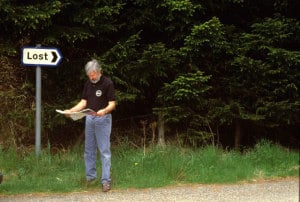Inbound Marketing Blog
for Manufacturers and Healthcare Companies
Don't Disappear From Search Engines After a New Website Launch

Getting a new website is an exciting thing! But what happens to your rankings in Google, Bing, and other search engines after you launch that new website?
Some people expect that just having a new website will automatically make an improvement from a search engine optimization perspective, but that's not always the case. In some cases a business launches a new website to find that they have disappeared from search, making it nearly impossible for anyone to find them even when searching their brand name.
The reason this happens is the search engines no longer understand your website the way that had in the past. Imagine if your hometown completely changed all of the streets. One day you go back and expect everything to be the same, but it's not. You'd have a very difficult time finding your way around. Eventually you'd start remembering the layout of the streets and be able to easily navigate which would happen quicker if it wasn't confusing, right?
The same thing happens with a search engine. They have to relearn your website and the less "confusing" it is for them, the quicker you'll return or have no loss at all.
By following these 5 tips, you'll be less likely to disappear from search engines after a new website launch.
5 Tips for Helping Search Engines Understand Your New Website
1. Be proactive, not reactive. Have a plan in place BEFORE your new website launches.
We're telling you right now that a search engine won't just automatically understand what you changed. The purpose of the next 4 tips are to help them understand as quickly as possible.
2. Give the search engines a map.
Many times on a new website launch your URLs will change. This is one major cause of a decrease in visibility. Google expects a page to be in a certain location, but it no longer is which causes a 404 error (page not found). Google and the other search engines don't like these. If you map out old urls to new urls using 301 redirects (permanently moved), the search engines will automatically know the location of the new page. Additionally any inbound link power to those pages should be carried over to the new page. This can be a tedious task, but it should be done and in place before the new website launch.
3. Don't forget old SEO achievements.
If your old website was successfully ranking for search terms, generating traffic and leads make sure your new website is optimized to carry on that success. As long as your old website had Google Analytics in place, you should be able to collect this data easily. Make sure your SEO person has all of this data on hand.
4. Use Google Webmaster Tools.
You should have this in place on your old website as well, but if not...definitely have it in place on the new one. By verifying your website with Google Webmaster tools you'll have more information about how Google sees your website. Additionally you'll get notifications when errors take place.
5. Have an XML sitemap in place.
An XML sitemap is a search engine friendly map of your websites structure. Remember, we're trying to make this very easy for the search engines. Create the sitemap and submit the sitemap through Google Webmaster Tools and Bing Webmaster Tools.
These are just 5 steps you can take to avoid losses in search engine visibility. They won't solve everything but it they cover the basics. If you can't do them yourself, be sure your developer or SEO knows they are important to you. Also remember that general SEO best practices should be implemented as well.
If you've never considered SEO on your old site or your new site, you might just be treading water.
Our Blogs, Direct to Your Inbox!
How to Audit your Online Marketing
If you are executing digital marketing, congratulations! You are most likely already one step ahead of your competition, and making strides to meaningfully connect with prospects online. But, how do you know if you’re seeing continual success year over year, and improving your metrics?
Without the tools in place to analyze and benchmark your efforts, it is impossible to scale your online marketing and ensure continuous success.


